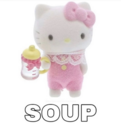Lecture: 'Nothing is something': How to read memes, readymades, and meaning

This is a work-in-progress chapter of my MA thesis on the lifespans of internet memes.
French visual artist Marcel Duchamp left a legacy of challenging the immediacy of form and meaning. In his words, “nothing is something” (Stauffer 2018). As perplexing as Duchamp and the dada artistic movement were to early 20th century audiences, this paper considers by comparison the emergence of similar memes (‘meme’ as loosely defined by Shifman 2014: 14). Duchamp’s term ‘readymade’ describes the lifting and (re)placement of an object into a new field of meaning, i.e. elevating the urinal as a toilet to a urinal as an artwork. Readymade demands of its audience to just simply ‘make do’, and to try to find new signification. Just like readymade artworks, the memes studied here typically pair hardly related yet highly specific texts and images together; a juxtaposition that seems superficially nonsensical, but is in fact relevant (cf. ‘relevance theory’ Sperber and Wilson 1996).
This is a work-in-progress chapter of a larger project on memes and is restricted to limitations in the searchability of images on social media. It is therefore based on handpicked tokens, and intends to initially bring to light new linguistic phenomena. I consider a transdisciplinary approach to issues in linguistic pragmatics and semantics (cf. Bal and Bryson 1991: 245), in an attempt to make sense of nonsense by problematizing how one ‘reads’ and navigates seemingly incoherent text. Whereas the act of reading implies a short path between sign and meaning, such shortcut is not possible here. I suggest that by viewing the message of readymade texts ‘poetically’ (Jakobson’s 1960), we find there is indeed something to them: they are subverted allusions to other texts, and reveal a split in ideologies as to how internet language is thought to be best used. Trying to understand and contextualize this subversion runs parallel to a longstanding cultural debate as to what art is and can be, and what reproductions have the potential to mean.
References
Bal, Mieke, and Norman Bryson. 1991. “Semiotics and Art History.” The Art Bulletin, 73.2: 174–208.
Jakobson, Roman. 1960. “Closing statement: Linguistics and poetics”. Style in Language. Ed. Thomas A. Sebeok. Cambridge: MIT Press, 350–377.
Shifman, Limor. 2014. Memes in Digital Culture. Cambridge, MA: The MIT Press. Sperber, Dan & Deirdre Wilson. 1996. Relevance: communication and cognition.
Oxford/Cambridge, MA: Blackwell Publishers.
Stauffer, Serge ed. 2018. Marcel Duchamp, die Schriften. 1st ed, reprint. Konstanz: Regenbogen
Verlag.
Info
Day:
2023-05-26
Start time:
16:25
Duration:
00:30
Room:
SH 0.106
Track:
Theoretical Linguistics
Links:
Files
Feedback
Click here to let us know how you liked this event.
Concurrent Events
Speakers
| Jacqueline Hirsh Greene |